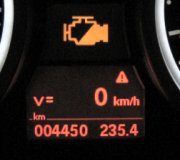Sometimes I can't hear the pump run initially because of the noisy chime inside the car, and sometimes it stops too soon to hear.
I never tried to turn the engine by hand but what you found suggests the system is working properly. Let me start you off with a copy / paste version of a reply I use very often:
When you turn on the ignition switch, the engine computer turns on the Automatic Shutdown (ASD) relay for one second, then it turns back off until pulses arrive from the crankshaft and camshaft position sensors. These pulses only occur when the engine is rotating, (cranking or running). It looks to novices like the computer isn't turning on the ASD relay if you're troubleshooting the system while just leaving the ignition switch turned on, but that's what's supposed to happen. That one second that the relay turns on is enough to run the fuel pump to insure fuel pressure is up and ready to start.
When sensor pulses arrive during cranking, the engine computer turns on the ASD relay constantly. Voltage from the relay feeds 12 volts to the ignition coil(s), fuel injector(s), alternator field winding, oxygen sensor heaters, and the fuel pump or fuel pump relay. Ever hear of Ford's silly inertia switch? It will kill the engine if you hit a big enough pothole. Chrysler accomplishes the same thing much more effectively with the ASD relay.
If you are in a crash that ruptures the fuel line with roughly 50 psi, the in-tank electric pump will pour raw fuel on the ground creating a severe fire hazard. With a ruptured line, you won't have fuel pressure. Without pressure, the injectors won't spray fuel and the engine will die. When there is no rotation, there's no crankshaft sensor pulses so the engine computer turns off the ASD relay and removes the voltage supply to the fuel pump.
To troubleshoot this system, you have to bypass the ASD relay with a paper clip or you have to work on it while cranking the engine, (not very practical).
To add to the story, the air gap for the crankshaft position sensor is critical. New sensors come with a thick paper spacer stuck to the end to set that gap. It slides off as soon as the engine is started and is done doing it's thing. If you remove and reinstall that sensor without the spacer, such as when replacing the transmission, it will likely hit the flex plate and be broken. That will result in a no-start condition.
Many aftermarket replacement sensors have a thin plastic rib molded on the end of the sensor to set the gap. It will partially wear away when in operation. To remove and reinstall those, you are supposed to cut the remaining rib off and use a paper spacer. You can get the paper spacers at the dealer's parts department.
Okay, I'm back. The place to start the diagnosis is by checking for diagnostic fault codes. Newer cars will display them in the odometer readout but I think on yours you still have to count the flashes of the Check Engine light. Turn the ignition switch from "off" to "run" three times within five seconds, wait for the Check Engine light to turn off, then count the series of flashes. It might start with one flash, a short pause, two flashes, then a longer pause before the next two-digit code starts. That's code 12 which can be disregarded. The last code will be 55 which just means "end of message". It's the codes in between that can be helpful.
Since you hear the pump turn on when you were turning the engine, that suggests the crankshaft position sensor and the camshaft position sensor are okay. If that's correct, there are two common things to look for. If there is a code related to "cam and crank sync", the timing belt may have jumped a couple of teeth. At one tooth off, the Check Engine light will turn on and that code will be set. At two teeth off, the Engine Computer will shut the engine down by turning off the injectors and coils through the ASD relay. At three teeth off, open valves will hit the pistons as they coast to a stop. The goal of shutting the engine down is to prevent that valve damage.
If you find the timing belt is correct but you still have that same code, suspect the dowel pin between the camshaft and sprocket has sheared off and the sprocket has turned a little. That will also make the valve timing late just as if the belt had jumped. One common clue is you may have spark from one of the two coils and the ASD relay will be clicking on and off repeatedly as you crank the engine.
Rather than listening for the fuel pump, and since we know it works, it's easier to use a test light or digital voltmeter to measure the voltage on the dark green / orange wire to the coil pack, any injector, or either small wire on the back of the alternator. There will be full battery voltage there for that first one second and during cranking. If you do see a solid 12 volts during cranking, the problem is in the fuel supply circuit, injector circuit, or the coil circuit. Those are not too common. If the voltage does not reappear during cranking, suspect the cam or crank sensors. If the voltage flickers on and off, suspect the timing belt or that dowel pin.
Sunday, June 12th, 2011 AT 7:38 AM



